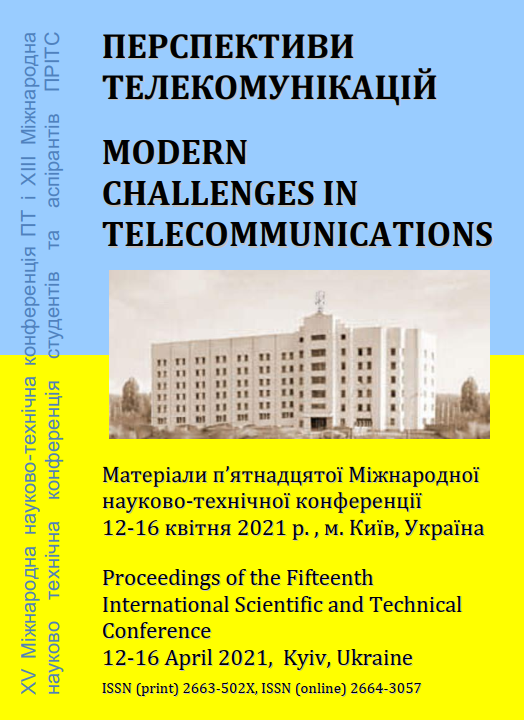ПІДХОДИ ДО ЕНЕРГОЗБЕРЕЖЕННЯ В БЕЗПРОВОДОВИХ СЕНСОРНИХ МЕРЕЖАХ
Ключові слова:
ЕНЕРГОЗБЕРЕЖЕННЯ, БЕЗПРОВОДОВА СЕНСОРНА МЕРЕЖААнотація
Розглянуто основні підходи до енергозбереження в бездротових сенсорних мережах. Це дуже широка тема, оскільки енергією, як одним з найбільш важливих ресурсів в мережах бездротової мережі, необхідно широко управляти, щоб продовжити термін служби мережі. Для вирішення цього питання було проведено кілька дослідницьких робіт що призводить до різних схем, а також протоколів.Посилання
Ye W. & Heidemann J. (2003) “Medium Access Control in Wireless Sensor Networks” Technical Report ISITR-580, USC/Information Sciences Institute.
Demirkol I., Ersoy C., & Alagöz F. (2006), “MAC Protocols for Wireless Sensor Networks: A Survey” IEEE Communications Magazine, pp 115 – 121.
Lai S. (2010), “Duty-Cycled Wireless Sensor Networks: Wakeup Scheduling, Routing, and Broadcasting” a thesis submitted to Virginia Polytechnic Institute and State University.
##submission.downloads##
Опубліковано
2021-05-14
Як цитувати
Кучеренко, А. А. . (2021). ПІДХОДИ ДО ЕНЕРГОЗБЕРЕЖЕННЯ В БЕЗПРОВОДОВИХ СЕНСОРНИХ МЕРЕЖАХ. Збірник матеріалів Міжнародної науково-технічної конференції «ПЕРСПЕКТИВИ ТЕЛЕКОМУНІКАЦІЙ», 322–324. вилучено із https://conferenc-journal.its.kpi.ua/article/view/231320
Номер
Розділ
Сенсорні мережі та прикладні аспекти застосування телекомунікаційних технологій
Ліцензія

Ця робота ліцензується відповідно до Creative Commons Attribution 4.0 International License.
Authors who submit to this conference agree to the following terms:a) Authors retain copyright over their work, while allowing the conference to place this unpublished work under a Creative Commons Attribution License, which allows others to freely access, use, and share the work, with an acknowledgement of the work's authorship and its initial presentation at this conference.
b) Authors are able to waive the terms of the CC license and enter into separate, additional contractual arrangements for the non-exclusive distribution and subsequent publication of this work (e.g., publish a revised version in a journal, post it to an institutional repository or publish it in a book), with an acknowledgement of its initial presentation at this conference.
c) In addition, authors are encouraged to post and share their work online (e.g., in institutional repositories or on their website) at any point before and after the conference.

